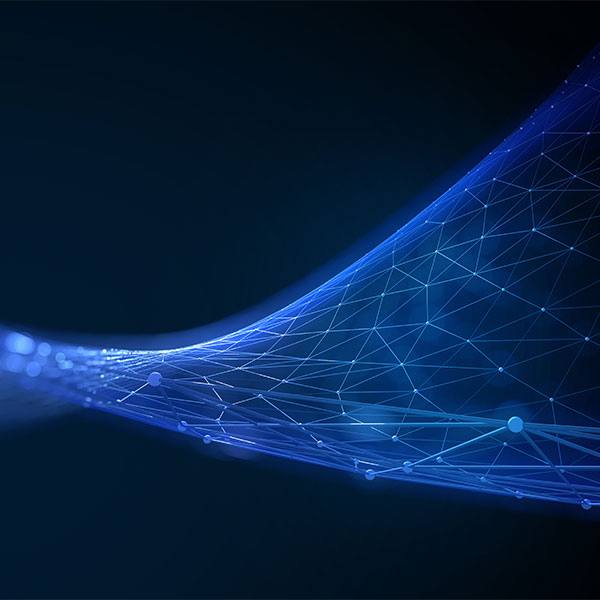-
Science Saturday: Regenerating the larynx for a second chance at speech
Mayo Clinic is leveraging advances in regenerative medicine to restore function for people whose lives have been drastically changed by a laryngectomy — surgery to remove the voice box. People without a voice box can neither speak with their natural voices nor breathe through their noses. Simple pleasures like smelling a bouquet of flowers or tasting favorite foods are greatly diminished, if not impossible. Mayo Clinic's Center for Regenerative Medicine invests in innovation to develop new ways to regenerate the voice box and restore normal abilities after diseases of the larynx.
"Until recently, there was no way to restore function when a larynx was removed. Some people would choose to live a shorter life rather than suffer with physical deficits left after a laryngectomy," says David Lott, M.D., an ear, nose and throat specialist and associate director of Center for Regenerative Medicine in Arizona.
As many as 60,000 people in the U.S. are living without a voice box, mostly due to laryngeal cancer or the residual effects of radiation damage. Others have irreversible traumatic injury to their larynx. The need for new therapies is great, with 12,000 new cases of laryngeal cancer diagnosed every year, according to the National Cancer Institute.
After a laryngectomy, the patient must breathe through a hole in the neck called a tracheostoma. That can be socially embarrassing and physically challenging. For instance, even taking a shower could be a drowning risk if water got into the opening in the neck. Then there's the arduous task of relearning to speak. Many people without a voice box use a prosthesis that allows them to make sounds by pushing air from the lungs through a valve. Another option for speaking is a battery-operated device that, when held to the throat, makes a mechanical robotic sound.
Mayo Clinic is pioneering three approaches for repairing the larynx that have potential to regenerate form and function in this complex organ.
Larynx transplantation
Advances in microsurgery have positioned Mayo Clinic to be among the first to offer larynx transplantation. Using powerful microscopes, surgeons are able to connect tiny blood vessels and nerves to successfully transplant a larynx from a deceased donor to a live patient. The United Network for Organ Sharing has granted the Mayo Clinic Larynx and Trachea Transplant Program in Arizona permission to perform these transplants. United Network for Organ Sharing is the federally-designated program that manages the nation’s organ transplant system. Mayo Clinic will perform two larynx transplants per year for the next five years through a first-of-its-kind clinical trial, after which the results will be evaluated for use in standard clinical care.
Transplantation is most suitable for people with larynx injury or those who have been cured from laryngeal cancer, but either have had a laryngectomy or radiation damage that hampers their ability to eat, speak and breathe.
"A larynx transplant would bring in all nice, new healthy tissue. A successful larynx transplant could restore the patient’s ability to breathe through their nose, swallow normally and speak with a more natural sounding voice," says Dr. Lott.
A larynx transplant offers the most promising way to recover laryngeal function, but it comes with a tradeoff. After the transplant, the patient will require lifelong immunosuppressants to prevent organ rejection.
3D printed implants
Oftentimes, laryngeal cancer affects only half of the voice box. Mayo Clinic has discovered a new way to remove just the diseased portion of the larynx while preserving the healthy part. Using CT scans, Mayo Clinic is able to create a 3D replica of the diseased portion of the larynx with exact dimensions of the section that was removed. The 3D scaffold is printed and implanted within the larynx.
"This could prevent the need for a laryngectomy, thereby preventing the need for a transplant. Patients would not need the tracheostomy tube in the long term. They could eat and drink like normal and retain a natural voice," says Dr. Lott
After the scaffold is implanted, Richard Hayden, M.D., a fellow ear, nose and throat specialist, uses a muscle flap to cover the implant. Over time, soft tissue grows into the scaffold, regenerating the portion of the voice box lost to cancer. The procedure is expected to last throughout the patient’s life. The implanted scaffold is currently available in clinical care.
Dr. Lott’s research seeks to further advance 3D printed implants. His team is investigating whether the use of stem cells and growth factors seeded within the 3D scaffold would regenerate larynx tissue without the need for muscle flap surgery.
"Using stem cells and other growth factors allows the body to form a natural epithelial lining. Our theory is that we would not need to use muscle from other parts of the body to complete the surgery. That could save healing time and money for the patient. They may not need a tracheostomy after surgery," says Dr. Lott.
Dr. Lott hopes to advance his research with the 3D stem cell implants from the current preclinical studies to human clinical trials by 2022. In the meantime, his team seeks to identify the first candidates for larynx transplantation in 2021.
###









